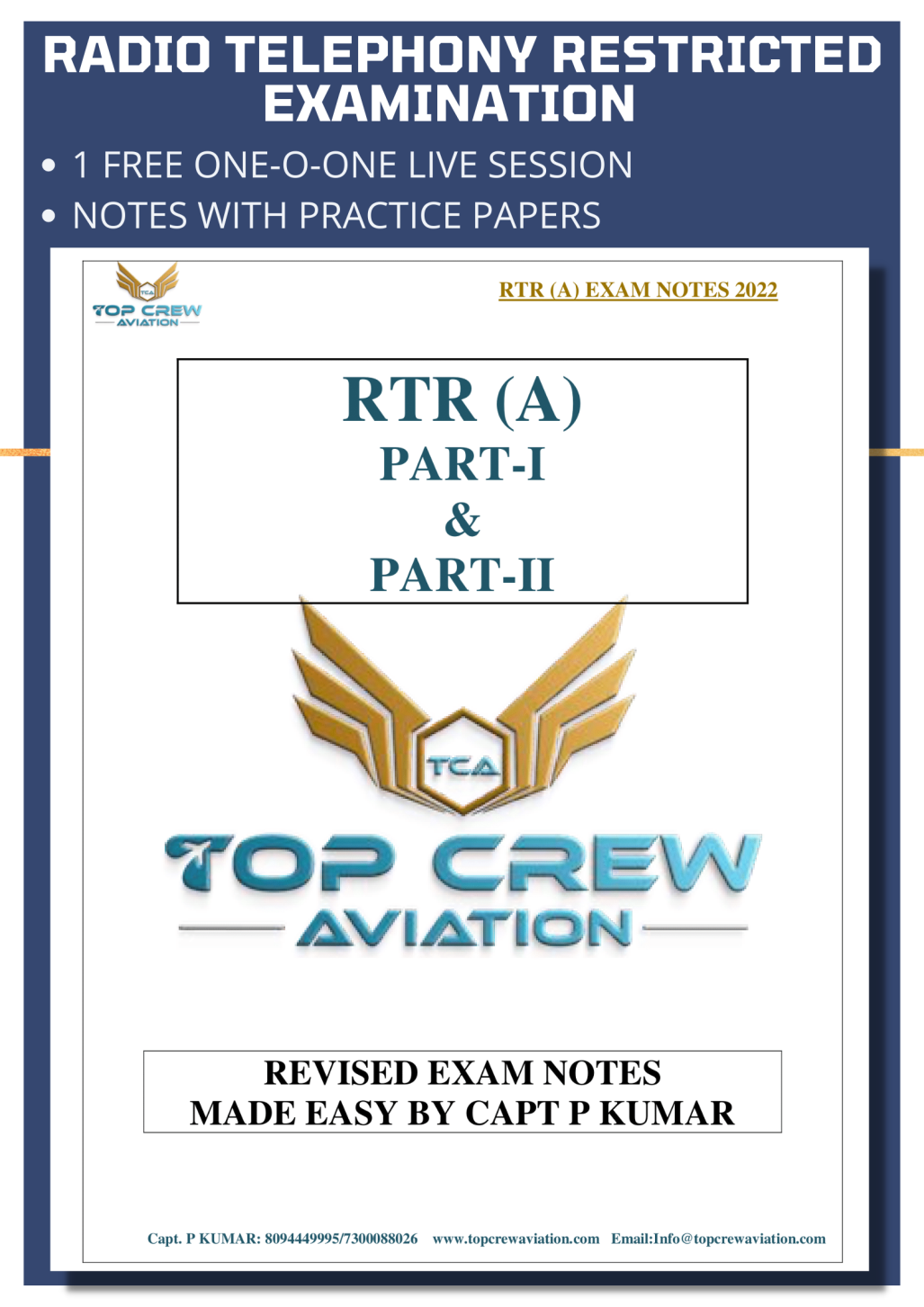

RTR (A) STUDY MATERIAL
Key Features:
- Get 2 sets of notes and practice sets for RTR(A).
- Concepts are explained in minute detail.
- Proven course structure & study material to pass DGCA examinations.
- Question Practice sets for each topic.
- After purchasing Support services.
- The most important questions included practicing & revisions.
- Concentration enhancement tips to optimize student performance.
- Notes are provided at an affordable cost.
- Pictorial/Graphical presentation for better understanding and memory aiding concepts.
The exam will comprise the two sections below-

Practical examination in Regulations and Procedure – 100 Marks
- General and Aeronautical 'Q' Code Signals and other abbreviations as set out in the International Civil Aviation Organization's Annex 10 (both volumes).
- Procedures for General Radio Telephone Communication and Radio Telephone Communication for detecting emergency trouble and direction.
- Measures for distress communication in Maritime Mobile Service.
- Radiotelephone spelling of words and figures.
- Installation and maintenance of radio equipment used in aircraft licensing requirements.
- Minimum requirement for aircraft carrying radio equipment as specified in Annex 6 of the International Civil Aviation Organization and Civil Aviation Authority in India.
- Flight information regions in India and the regional radio communication and navigation services are available along with the primary frequencies of connectivity and navigation in India.
- Aviation meteorological protocols, pre-flight briefing services, and their usages.
Regulations and Procedure:

Oral examination in – 100Marks Regulations and Procedure Radio Principles and Practice
- Electrical units like Volt, Ampere, Ohm, and Watt; wavelength, frequency, and the relationship between them.
- Elementary knowledge of the transmission of radio frequencies and night frequencies, skip ranges, fading, ground shadow, and its effect on contact, and frequency choice to achieve maximum efficiency in the handling of HF Communications airfield.
- General knowledge of aircraft communications systems, including SELCAL service, intercommunication, and notification of aircraft systems.
- Aids, microphone and headphone operation, squelch, AVC, volume control, transmitter tuning, simplex, and duplex operation.
- Radiotelephone communication advantages and disadvantages; range limitations due to frequency interference, etc.
Radio Principles & Practice:

